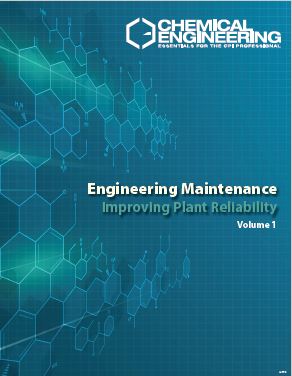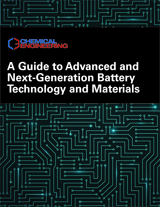Description
For process operators throughout the chemical process industries (CPI), proper maintenance is essential to ensure the safe and reliable operation of CPI facilities. This guidebook provides a wealth of practical recommendations to help CPI facilities plan for and manage maintenance activities in the most proactive, organized and cost-effective way.
Articles focus on managing overall maintenance programs and optimizing efforts during planned shutdowns and turnarounds, provide maintenance-related recommendations for specific equipment components and systems such as boiler-water-treatment systems, agitators, sealing systems, burner systems, boilers and steam-handling units, distillation systems and more. Emphasis is placed on the particular challenges of maintaining rotating equipment, measuring flow in lines, ducts and stacks.
Delivered in a PDF format, 176 pages.
Topics Include:
Effective Agitator Operation and Maintenance
• Agitators play key roles in chemical processing. Their proper operation and maintenance can improve process reliability, leading to reduced downtime and costs
Maintaining heat-transfer-fluid quality Steam Concepts
Heat Exchanger Standards for Shelland-Tube Equipment
• Reliable operation of shell-and-tube heat exchangers begins with an appropriate standard. This article provides an overview of those that are applicable
Special Flange Joints Used in Floating-Head Shelland-Tube Heat Exchangers
• Single-pass, floating-head heat exchangers are common in certain process operations, but they often use flange joints that are not covered in existing design codes. Design details, advantages and disadvantages of the different options are discussed here
Plant Revamps and Turnarounds: Some Lessons Learned
• Although time is always precious, taking shortcuts and skipping standard procedures can be costly
Chemical Process Plants: Plan for Revamp
• Follow this guidance to make the most of engineering upgrades that are designed to improve plant operations or boost throughput capacity
Flow Measurement in Large Lines, Ducts and Stacks
Operating Strategies for Gas Dehydration Units
• The presence of certain contaminants can wreak havoc on gas dehydration systems and other similar separation processes, but there are design measures that can help to minimize the issues caused by these substances
Pump Sizing and Selection Made Easy
• Viscosity, power consumption, commercial availability and lifecycle cost analysis are all important considerations in pump sizing. An automated spreadsheet method helps engineers take those factors into account in centrifugal pump selection
An Investigation of Premature Flooding in a Distillation Column
• Surprising observations regarding flooding in the upper fractionation trays of an atmospheric crude-petroleum distillation column are investigated
Cost Engineering: Equipment Purchase Costs
• A methodology and examples for estimating equipment costs are presented
Lifecycle Costs for Capital Equipment In the CPI
• Longterm equipment costs need to be fully considered in capital-cost assessments
Maintaining Heat-Transfer-Fluid Quality
• Learning what can degrade heat-transfer-fluid quality can help minimize potentially negative effects
Liquid-Gas Coalescers: The Effects of Retrograde Condensation
• Modeling and pilot testing can minimize its impact during natural-gas processing
Seal Material Properties
Performance Prediction for Industrial Boilers
• Understanding boiler performance calculations can allow engineers to improve the operation of their facility’s steam system and better engage with boiler-system vendors
Shell-and-Tube Heat Exchangers: The Design Cycle
• Following this step-by-step approach will ensure that the heat exchanger will perform as required when finally fabricated
Rotating Machines: Digital Technologies to Enable Predictive Maintenance
• Predictive maintenance for rotating machinery is gaining prominence as plant operators embrace analytics and learn how to approach their operating benchmarks
Connecting Operations Personnel to Reliability Efforts
• Seven methodologies are described to help operations staff take greater ownership of asset performance
Precision Grouting: Setting the Foundation for Equipment Reliability
• A clear understanding of grout material properties is important to ensure that equipment is effectively protected against vibration and misalignment
Torque Limiter Technologies for Rotating Machinery
• Torque overloads can cause serious problems for rotating machinery, but an understanding of torque limiting technologies can help engineers to enable more reliable operations
The Unrecognized Problems of Relocating Laboratories
• Follow the guidance provided here to avoid many of the problems that can arise during the relocation of laboratory facilities
Heat Transfer in Wiped Film Evaporators
• Simulations demonstrate the complex, changing properties of materials within the evaporator. Such information can help in both designing and selecting the proper evaporator
Filter Aids
Best Practices in Capital Equipment Commissioning
• Ensuring that real-world commissioning tests are properly executed can benefit both equipment end users and suppliers
Commissioning and Startup: Increase Certainty Through Advanced Planning
Experimental Methodologies to Verify Distillation Simulations
• Presented here are practical considerations concerning the equipment and methods used for experimental verifications of simulations
Avoid Common Mistakes When Specifying Burner Management Systems
• While some aspects of burner management systems may seem intuitive, overcoming misconceptions in their specification and design will help to elevate overall safety
Heat-Transfer Fluid Selection
Treating Boiler Feedwater for Reliable Operation
• These key elements of internal boiler feedwater (BFW) treatment will help avoid boiler tube failures due to scale and pitting
Protecting Sensor Data Transmitted Wirelessly: A Grounds-Up Approach
• Do not assume security is extensive enough to protect your critical data and processes. Take a layered security approach using different tactics to establish best practices for protecting network data




